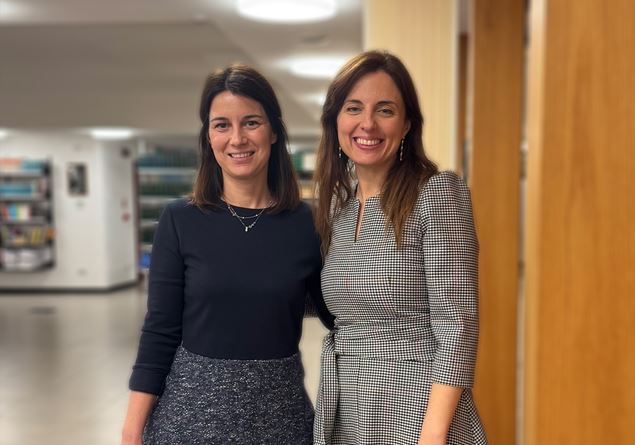
Aston Martin’s New CEO Andy Cowell Defends Team’s Ambitious F1 Engineering Strategy Amid Leadership Cha
nges
Aston Martin’s Formula 1 team has entered an exciting new chapter under the leadership of Andy Cowell, who assumed the role of CEO in early 2024. With a new strategic direction and a host of experienced technical figures from rival teams, the team is setting its sights on reaching the pinnacle of Formula 1. However, recent leadership changes, including the departure of Technical Director Dan Fallows, have raised questions about Aston Martin’s engineering structure and their future prospects in the sport. Cowell, a key figure in Mercedes’ dominance of Formula 1, has been vocal about the team’s strategy, defending its unique matrix-style approach while emphasizing the need for collaboration and specialized focus to reach the front of the grid.
A Transformative Leadership Change
Andy Cowell’s appointment as CEO marks a significant turning point for Aston Martin’s Formula 1 team. Cowell’s vast experience at Mercedes, where he played an instrumental role in the development of their power units, is seen as a critical asset for Aston Martin’s ambitions. His tenure at Mercedes, where he was responsible for the design of the hybrid engines that powered the team to multiple Constructors’ and Drivers’ Championships, gives Cowell a wealth of knowledge to apply in his new role.
As CEO, Cowell inherits a team that has made major strides in recent years, but he is also tasked with taking Aston Martin to the next level. The team has enjoyed notable progress under the leadership of owner Lawrence Stroll, who has heavily invested in the infrastructure and recruitment of top-tier personnel. Cowell’s leadership is expected to strengthen the team’s focus on development and long-term growth.
With the recent departure of Martin Whitmarsh, Cowell’s new role will see him not only manage the day-to-day operations of the team but also oversee the integration of various technical figures from rival teams and guide the team through a phase of rapid growth and transformation.
The Matrix-Style Engineering Structure
At the core of Aston Martin’s evolving strategy is its decision to adopt a “matrix-style” engineering structure. This innovative organizational model involves assigning senior technical leaders to focus on different areas of the car’s development, creating an interconnected web of expertise that works together towards a common goal. This approach has been defended by Cowell, who pointed to Mercedes’ successful use of similar models during their run to dominance in Formula 1, particularly leading up to their breakthrough in the hybrid era in 2014.
“I remember Mercedes Grand Prix pulling together a gaggle of impressive technical directors and it working out okay on that run into 2014,” Cowell remarked in an interview with select media, referring to Mercedes’ ability to integrate various technical experts, such as engine specialists and aerodynamics engineers, to push the team to the top of the grid.
Cowell acknowledged that Aston Martin’s current setup is still evolving. The team’s ambitious expansion plans and strategic goals have necessitated the creation of a flexible and dynamic engineering structure, where specialized technical leaders can each tackle a significant part of the car’s development. He emphasizes that having a team of senior figures focused on different aspects—be it aerodynamics, power units, or simulation tools—will ultimately accelerate the team’s progress toward becoming a world title contender.
This shift is also a response to the fact that Aston Martin is a relatively young organization in comparison to Formula 1 giants like Ferrari, Red Bull, and Mercedes. While Aston Martin has a rich history dating back to the Jordan days in the 1990s, its modern-day effort to break into the top tier of F1 is only recent. This has meant that the team has had to play catch-up to its more established competitors in terms of facilities, resources, and technical leadership.
The Departure of Dan Fallows
In one of the most talked-about recent developments, Technical Director Dan Fallows announced that he would step back from his role. Fallows had joined Aston Martin in 2022 from Red Bull, where he had been integral to the design and development of some of the most successful cars in recent F1 history. His arrival was seen as a major coup for Aston Martin, and his work was expected to help close the gap between the team and the frontrunners.
However, following the team’s recent recruitment of high-profile engineers, including Adrian Newey from Red Bull, Eric Blandin from Mercedes, and Enrico Cardile from Ferrari, questions began to emerge about how Fallows would fit into the broader engineering structure. Aston Martin’s technical leadership now includes an impressive array of talent, and it seems that the reshuffling of roles is part of an effort to better integrate these new hires.
Fallows’ move to a new role within Aston Martin reflects the growing complexity of the team’s operations as it continues to expand and develop. While his departure from the role of Technical Director is notable, his continued presence within the organization ensures that his expertise will still be a valuable asset in the team’s technical endeavors. This change speaks to the fluid nature of Aston Martin’s evolving structure, which is intended to maximize the impact of all its key personnel.
A dream team of engineers
One of the most exciting aspects of Aston Martin’s strategy is its ability to recruit some of the brightest minds in Formula 1. The signing of Adrian Newey, widely regarded as one of the best car designers in F1 history, is a major coup for the team . Newey’s work has been synonymous with success, designing championship-winning cars for Red Bull Racing that helped propel them to multiple world titles. His expertise in aerodynamics and overall vehicle design will be invaluable as Aston Martin looks to make its mark at the front of the grid.
In addition to Newey, the team has recruited Enrico Cardile, formerly of Ferrari, and Eric Blandin from Mercedes. Cardile’s experience in vehicle concept and Blandin’s expertise in vehicle dynamics are two key pieces that will help ensure the car’s performance is finely tuned to compete at the highest level. These technical leaders bring a wealth of knowledge to Aston Martin and will play pivotal roles in the team’s efforts to bridge the performance gap to its rivals.
This strong technical leadership has already begun to bear fruit. Aston Martin’s car for 2024 showed signs of increased performance, and the team is expected to continue making strides in the coming seasons. However, with the engineering department expanding rapidly, the real challenge will be integrating these world-class talents into a cohesive, well-functioning unit.
Related: Formula 1’s Bold Push to a Net-Zero Future: Engineering Solutions Beyond the Track
Related: Nestlé’s KitKat Scores Big with Formula 1 Sponsorship as CEO Freixe Shifts Marketing Strategy
Aston Martin’s Infrastructure Investment
To support its growing technical workforce, Aston Martin is making significant investments in its facilities. Cowell highlighted the importance of infrastructure in achieving the team’s long-term goals. The team is currently building its own wind tunnel, which will give them greater control over aerodynamics development and testing. Having an in-house wind tunnel is a key advantage for any F1 team, as it allows for faster, more efficient development cycles.
In addition to the wind tunnel, Aston Martin is also investing in cutting-edge simulation tools. These advanced simulation technologies will help the team understand car behavior and performance more accurately and enable them to make data-driven decisions that can have a profound impact on track performance. The use of simulators is an essential part of modern F1 development, and Cowell’s comments indicate that the team is fully committed to using this technology to its advantage.
The team’s investment in Honda’s power unit technology is another key aspect of Aston Martin’s long-term plan. For the 2026 season, F1 will introduce new engine regulations, and Aston Martin’s collaboration with Honda is expected to provide them with a competitive edge. The development of a new gearbox to match the upcoming Honda power unit is a significant undertaking, and Aston Martin’s focus on this area is a clear indication that they are preparing to be at the forefront of the new era of F1 engines.
A Long Term Vision
Aston Martin’s leadership changes, along with its strategic focus on infrastructure and engineering talent, reflect a clear long-term vision for the team. While the journey to the front of the grid will be challenging, the team is laying the groundwork for sustained success. Cowell’s leadership, combined with the team’s growing technical capabilities, positions Aston Martin as a team that is not just focused on short-term gains but is building a foundation for future championship contention.
With a combination of exceptional talent, strategic investments, and a unified vision, Aston Martin is poised to become a serious contender in Formula 1. As the team continues to integrate its new hires and enhance its facilities, all eyes will be on Aston Martin in the coming seasons. If their vision comes to fruition, we could be witnessing the rise of a new powerhouse in Formula 1.








